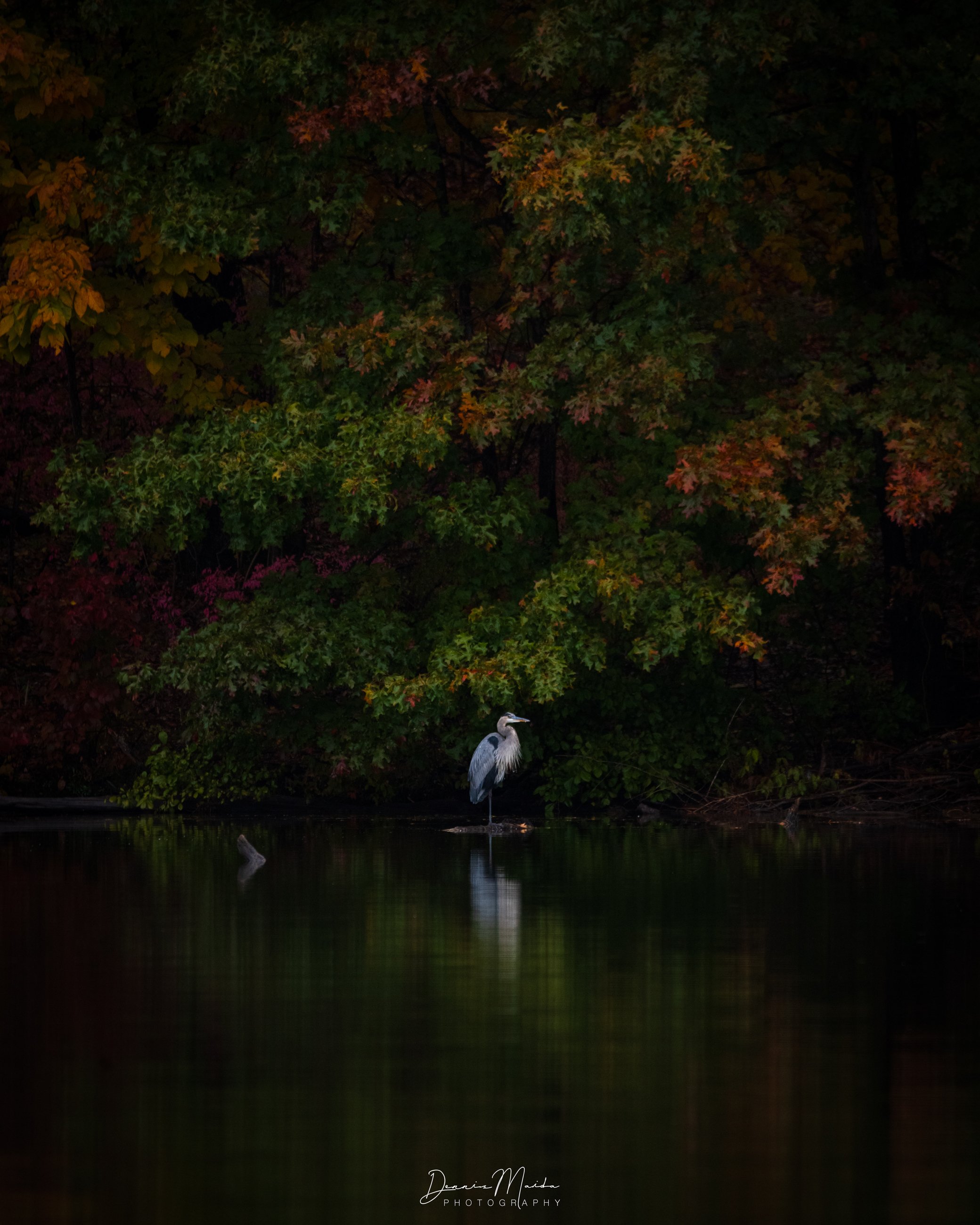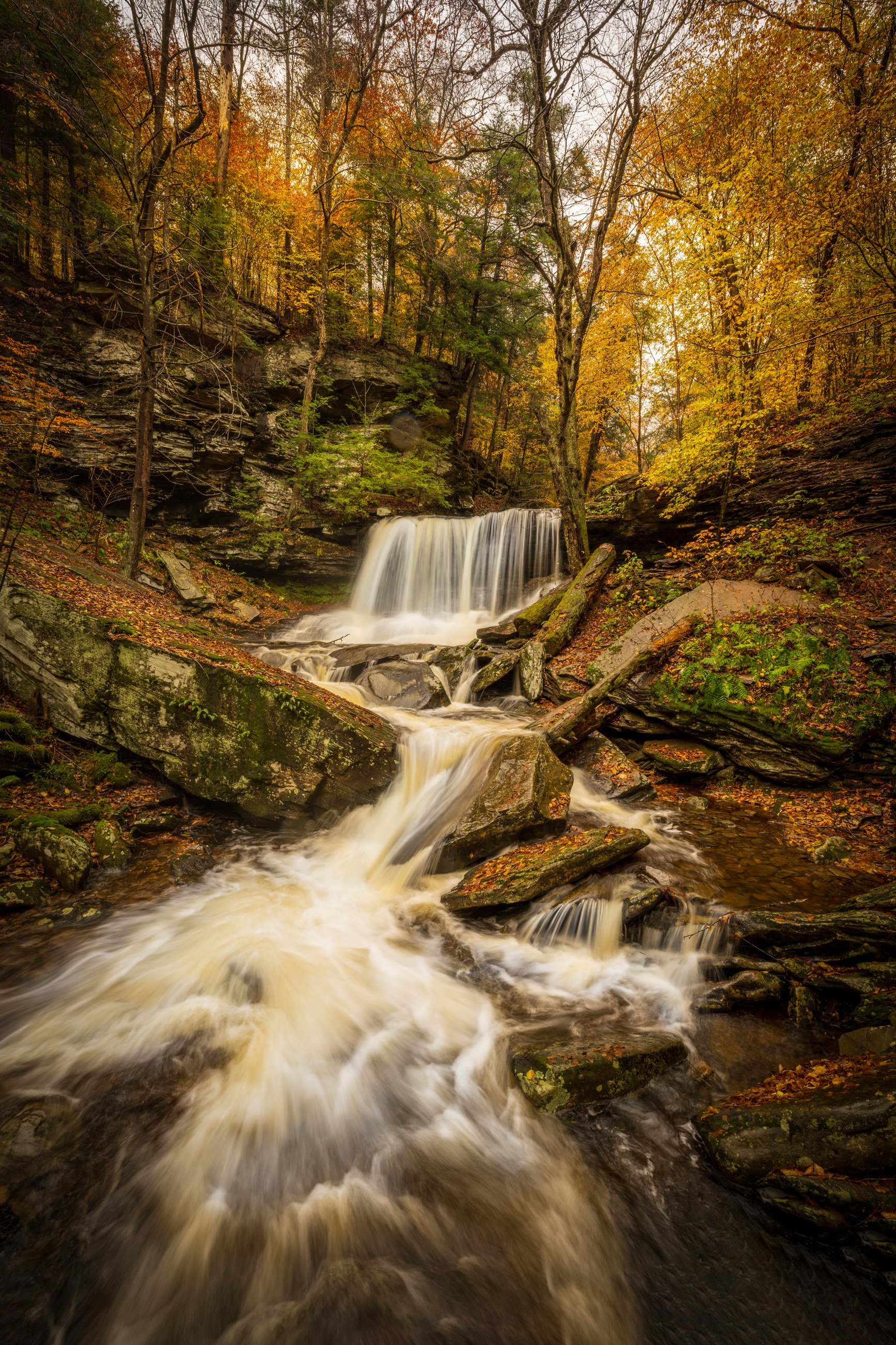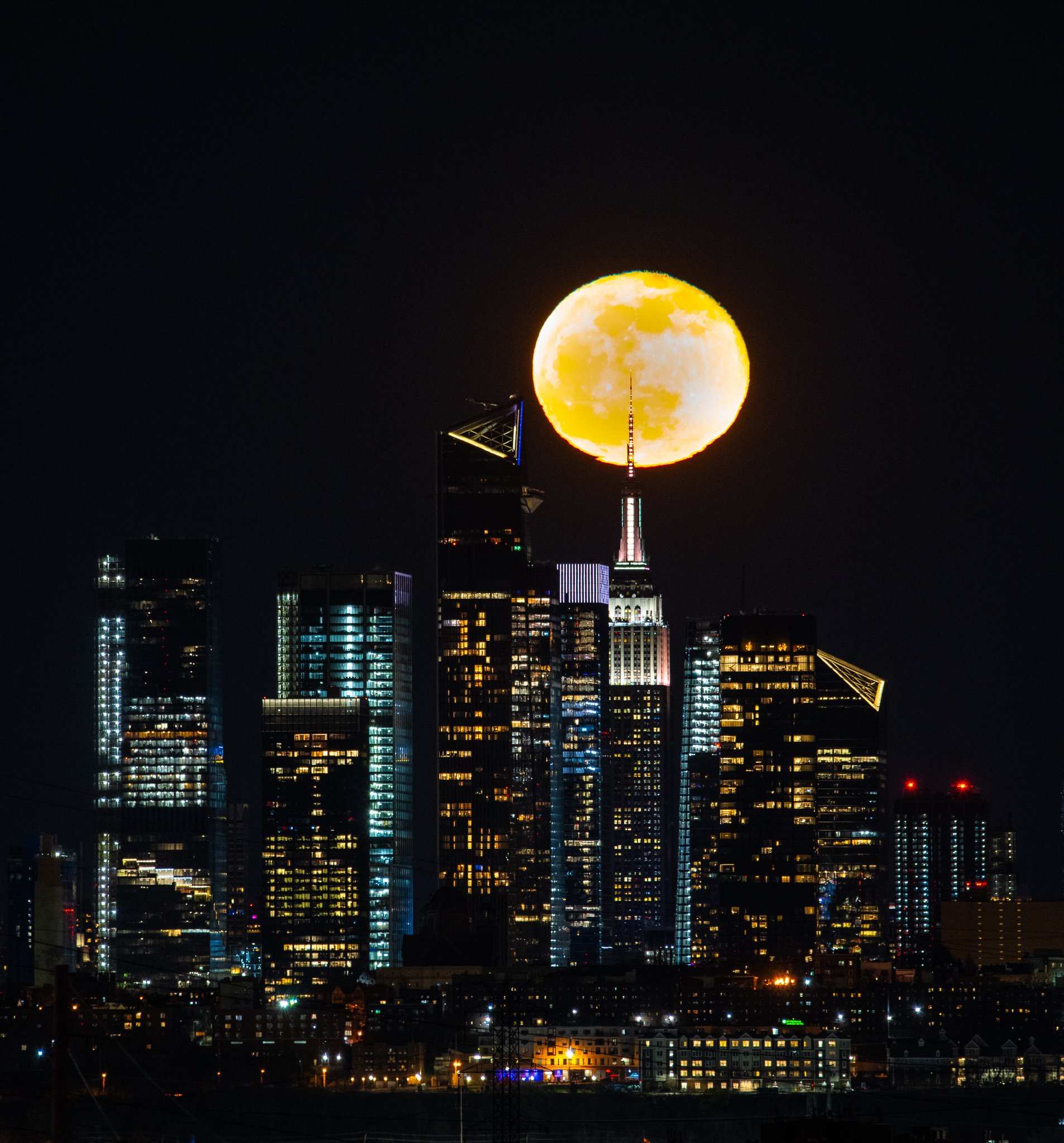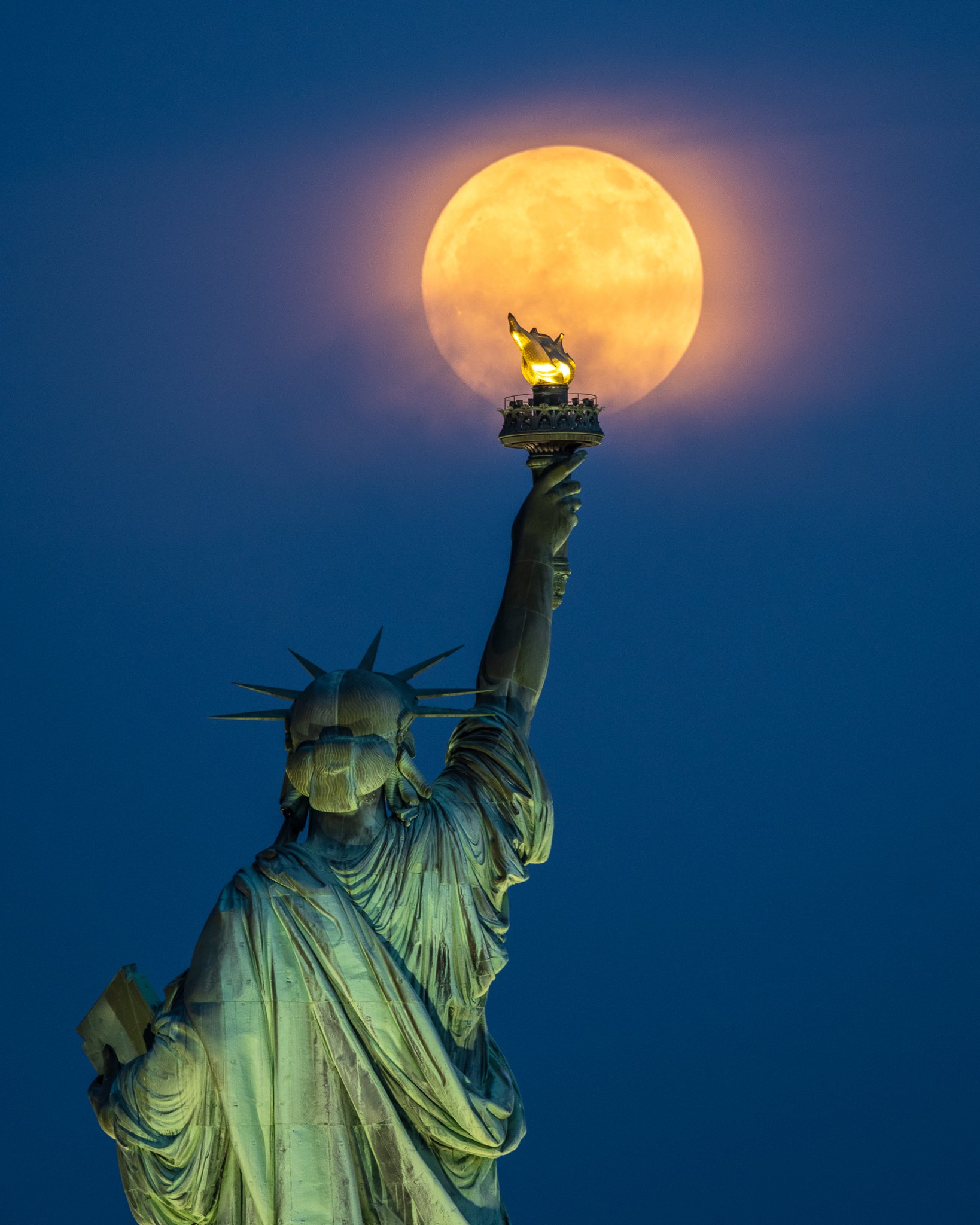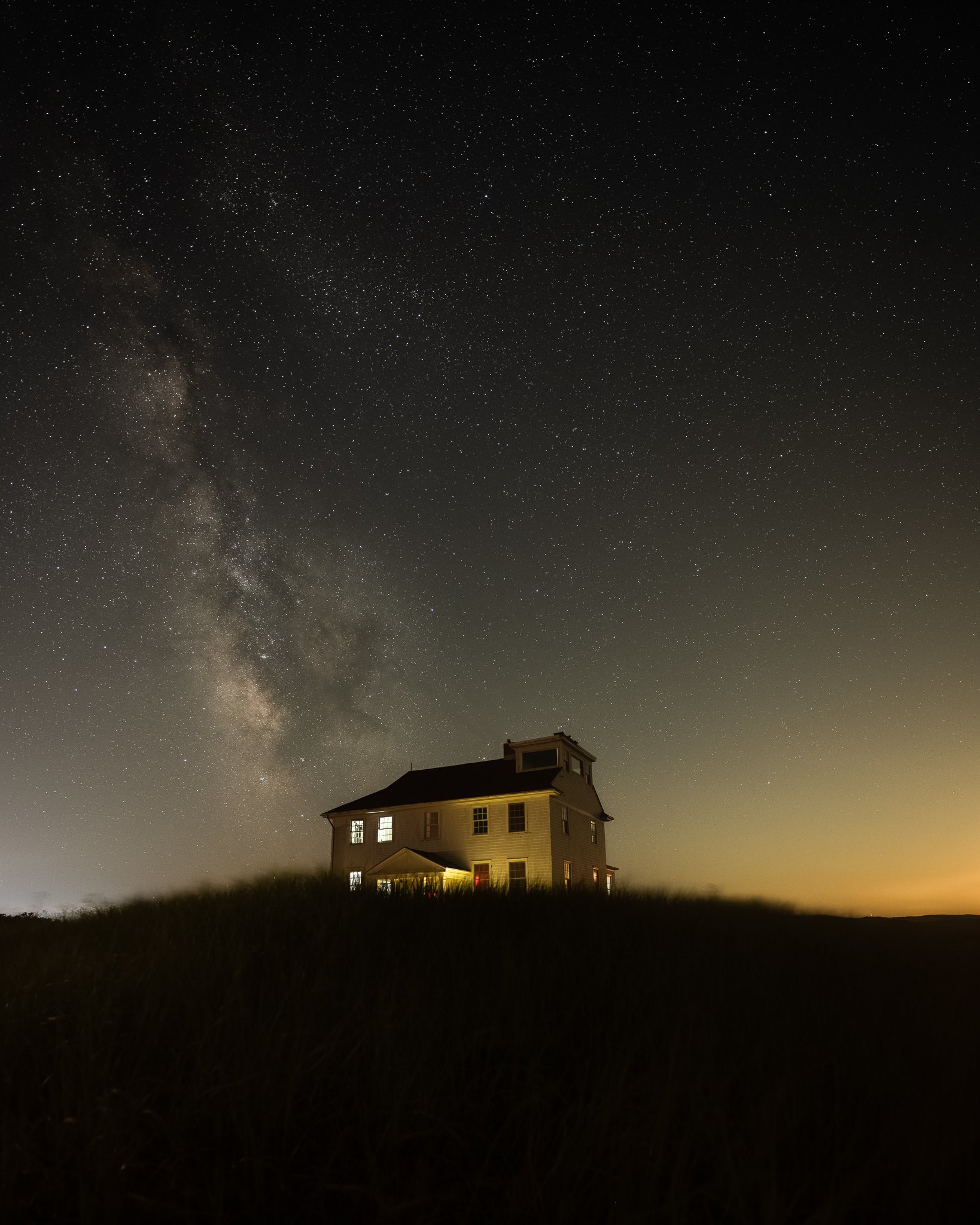Join the visual odyssey of "Best of 2023," a collection capturing the essence of time and beauty. Embrace the minimalist journey, now on Patreon, where each image invites you into a world of simplicity and story. Witness "C Moon" and more, celebrating a year of photographic evolution. Discover the narrative, join the community, and see the world through my lens. Your journey awaits on Patreon – be a part of it today.
Read MoreBefore getting out there to capture your image, planning is key to success, but can stymie creativity
Embracing the Unpredictable: A Photographer's Journey Beyond Analysis Paralysis
Introduction
Have you ever found yourself dreaming of capturing that perfect landscape or night sky shot, only to be hindered by the relentless pursuit of perfection? This scenario, often termed "analysis paralysis," is a common plight for many photographers. We envision an immaculate scene, meticulously plan for the ideal weather conditions, and tirelessly search for the ultimate location. Yet, sometimes, this over-analysis leads to missed opportunities and a lack of spontaneity in our photography adventures.
A singular birch tree aglow with autumn leaves stands out against a dark, forested lakeside.
The Pitfalls of Over-Planning
My journey through the realms of landscape and astrophotography has taught me valuable lessons about the dangers of over-planning. I recall countless instances where I was glued to weather apps, anxiously trying to predict the perfect moment to capture the Milky Way or the golden hour's magical light. This relentless pursuit often led to frustration and disappointment when conditions weren't precisely as expected.
A Change in Perspective
During my October trip to Vermont for my niece's wedding, I seized the opportunity to capture the quintessential fall foliage. Despite weeks of searching online for the perfect spot, I found myself overwhelmed. Opting for exploration over exhaustion, I took a spontaneous drive, just two miles down the road. There, a serene lake awaited, where the morning light kissed a lone Birch tree, its reflection mirroring in the calm waters. This unplanned moment gifted me one of my favorite images, encapsulating the tranquil beauty of Vermont's autumn.
Star Trails Over Fort Hancock, NJ.
Embracing Spontaneity
This experience was a revelation. I realized that while planning is essential, there is immense beauty in spontaneity and embracing the unknown. Since then, I've adopted a more flexible approach to my photography outings. Rather than waiting for the perfect conditions, I now seize the moment, regardless of the weather or location. This shift in mindset has not only enhanced my creativity but also my enjoyment of the photographic process.
Tips for Overcoming Analysis Paralysis in Photography
Be Prepared, but Flexible: Have your gear ready and a basic plan in mind but be open to changes.
Embrace Imperfect Conditions: Sometimes, the most dramatic and compelling shots are captured under less-than-ideal circumstances.
Enjoy the Experience: Photography is not just about the result; it's about the journey and the experiences you gather along the way.
Experiment with Spontaneity: Allow yourself to explore new locations without extensive research. Surprise elements can lead to unique photographs.
Learn from Every Shot: Every photograph, whether it meets your expectations or not, offers valuable learning experiences.
Take the road less traveled and you’ll never be lost
Conclusion
In conclusion, while it's natural to strive for the perfect shot, it's equally important to break free from the shackles of over-analysis. By embracing spontaneity and the unpredictable nature of photography, you open yourself up to a world of unexpected and extraordinary possibilities. Remember, the best shots are often those that are unplanned and captured in the pure joy of the moment. So, pack your camera, step out the door, and let the adventure unfold!
The First Frost
There’s a moment, fleeting and rare, that marks the passage from the vibrant dance of autumn to the silent repose of winter. This moment has been captured here, in this photograph: the first frost.
Envision yourself on a brisk November dawn. You step out, and the air is not just cold, it’s alive — it tingles on your skin, fresh and electrifying. You’re wrapped up snug in your coat, your breath a visible sigh, mingling with the ethereal mist of the morning.
The grass crunches underfoot, a sound so satisfying, like nature’s own symphony, played just for you. It’s a carpet of tiny diamonds, each blade of grass encapsulated in a thin layer of ice. And as your gaze lowers, you see it — a lone leaf, an ember from autumn’s fire, now caught in the delicate frost.
This leaf, with its vivid colors now frosted at the edges, is a storyteller. It speaks of sunny days and rustling winds, of the rustle of footsteps through piles of its kin. And here it is before you, a snapshot of change, a symbol of the impermanent nature of all things.
I invite you to lean in, to see the fine details — the ice crystals, nature’s own artwork, more intricate than any lace. There’s a quiet beauty here, a stillness that asks for nothing but your appreciation.
But let’s not just be observers. Let this image be a reminder to savor the simple pleasures. So, go ahead, find a patch of frosted grass, listen to the crunch, and feel the texture of ice between your fingers. Watch as the sun climbs higher, and this artwork melts away. Because the first frost isn’t just a sign of winter’s arrival; it’s a call to be present, to witness the artistry in the everyday, and to find warmth in the heart of the cold.
This photo, this moment, it’s a gift. It’s a conversation with nature that begins with a simple, silent "wow." And perhaps, as the frost retreats with the morning light, you’ll carry with you not just the memory of this beauty, but a sense of wonder that will last throughout the seasons.
Awosting Falls, NY
The Silent Song of Fall: A Photographic Journey with a Brother-in-Arms
Amidst the breathtaking spectacle of autumn, with its fiery hues of reds, warm yellows, and deep oranges, I recently found myself on a memorable expedition. This journey was not solo; by my side was a dear old friend, a companion from our days in the military. Our shared experiences during our service had bound us in a camaraderie that time had not weakened. Today, we were united by a different kind of mission – capturing the ephemeral beauty of fall.
Monksville Reservoir, NJ
Our adventure commenced mid-day at Monksville Reservoir, where we raced against the diminishing light. The afternoon sun cast a rich, golden glow on the landscape, creating a mesmerizing tableau. The trees, in their autumn finery, seemed to stand tall and proud, their reflections prancing on the serene waters.
As we busied ourselves setting up tripods, adjusting camera settings, and scouting for the best vantage points, we seamlessly slipped into our old rhythm. I emphasized the significance of not just seeing but feeling the environment, a connection that transforms a simple photograph into a poignant memory.
With our spirits high and cameras loaded, we made our next stop: Awosting Falls in New York. This posed its own challenges. Balancing the play of shadows with the setting sun, navigating a plethora of potential compositions that threatened to overwhelm, and managing around the sizable crowds that had flocked to the falls that day. It was a dance of patience, creativity, and camaraderie.
Our military days had ingrained in us many virtues – discipline, teamwork, and the treasuring of shared moments. As we maneuvered through the crowd, capturing the falls from various angles, and exchanging stories from the past, the image titled "The Silent Song of Fall" took shape. It symbolized more than the beauty of the season. It represented our enduring bond, our shared past, and our mutual love for exploration.
Life's tapestry is woven with moments – some fleeting, others that linger. Every so often, we are granted the privilege to pause, reflect, and create fresh memories with those pivotal to our journey. "The Silent Song of Fall" is more than a nod to autumn's splendor. It stands as a testament to timeless friendships, new beginnings, and the myriad adventures that lie ahead.
In Closing,
Photography is a dance between capturing a moment and telling a story. As our journey continues, may we always find beauty, meaning, and camaraderie in every frame.
A Serendipitous Journey to Glade Creek Grist Mill
When it comes to photography and capturing the essence of nature's spectacle, timing is everything. My recent trip to the Glade Creek Grist Mill in West Virginia was a testament to this age-old adage. However, as with many adventures, it's not always about getting the perfect shot, but the journey itself and the stories that emerge along the way.
The plan was simple enough: a brief trip to capture the mill against the fiery backdrop of West Virginia's autumn foliage. I had meticulously kept tabs on foliage reports to ensure I would be present during peak color. But nature, in her capriciousness, had other plans. The reports were off by a fortnight, and while the colors weren't at their zenith, the scene was still breathtaking.
Rising early, I had hoped to be the first photographer on site. But arriving at 7:30 am, I was met with a surprising scene: several cameras and tripods already jostling for the best vantage point of the classic composition. Far from being a solitary venture, the morning turned into a meeting of minds, as photographers from all over the country converged with the same goal in mind.
Throughout the day, I was fortunate to interact with an array of talented photographers. There was camaraderie in the air, a shared passion binding us together. The iconic mill, with its rustic charm and the cascading waters of the creek, acted as a magnet, drawing in enthusiasts keen to capture its beauty in the midst of fall.
Unsatisfied with the morning's captures due to the not-yet-peak foliage, I decided to return in the evening, hoping to frame the mill against the canvas of the starlit sky. The Milky Way, in its celestial grandeur, would be the cherry on top.
Evening brought with it new encounters. I met a couple living the "van life," their home on wheels parked nearby as they reveled in the splendors of autumn. Their zest for life and adventure was palpable. Two gentlemen from Dallas regaled me with tales of their foliage-chasing journey that began in Boston and wound its way southward. Their excitement was contagious, reminding me of the thrill of the chase.
Perhaps the most enchanting meeting was with a lady from Kansas. She had been car camping since September, traveling the length and breadth of the country. Armed with a sketchbook and paints, she was on a quest to capture the diverse landscapes of America, which she would later transform into watercolor masterpieces.
As the day wound to a close and the Milky Way shimmered above the Glade Creek Grist Mill, I realized that while the foliage might not have been perfect, the experience was. The memories made, the stories shared, and the connections formed underscored the magic that such trips offer. Nature has a way of bringing people together, and my journey to West Virginia was a heartwarming reminder of this beautiful fact.
Exposing Autumn's Magic: Perfecting Long Exposure Techniques in Stream Photography
Introduction
Autumn's rich tapestry of colors provides a surreal backdrop for photographers. When combined with the flowing serenity of streams, there's potential for pure magic. Long exposure techniques can transform these scenes, turning rushing waters into mystical veils of mist, juxtaposed against the crisp, static beauty of fall foliage. Ready to capture this magic? Let's dive in.
Camera Settings for Long Exposure Streams
Shutter Speed: Start with 1-2 seconds and adjust based on the water's speed. More turbulent areas might need less time, while calmer waters can go up to 30 seconds or more.
Aperture: Aim for f/8 to f/16, ensuring a deeper depth of field so both the foreground (water) and background (foliage) are in focus.
ISO: Keep it low, around 100 or 200, to avoid noise.
Composition Tips
Lead with Lines: Use the stream as a leading line, drawing the viewer's eye deeper into the image or towards a focal point.
Vary Perspectives: Instead of always shooting downstream, try shooting up or across. Get low for an immersive feel or find a higher vantage point to capture the stream's journey through the autumn landscape.
Reflections: Still parts of the stream can reflect the brilliant fall colors, doubling the visual impact.
Post-processing Touches
Enhance Colors: Boost the saturation slightly to make the autumn colors pop but ensure it looks natural.
Sharpen: Apply sharpening to bring out the leaf textures, contrasting against the soft water flow.
Adjust Highlights and Shadows: Fine-tune to ensure details in the brightest and darkest parts of the image are visible.
Conclusion
Autumn streams, with their constant motion, offer a unique canvas to explore the art of long-exposure photography. As the leaves change and waters flow, the opportunity to freeze time amidst nature's transient beauty awaits. Grab your gear, find your stream, and let the colors and waters of fall guide your next masterpiece.
Have you experimented with long exposure techniques in autumn streams? Share your experiences, challenges, and favorite shots in the comments. Let's flow with the beauty of fall together!
The setting sun sets the trees aglow
"The Magical Confluence: Golden Hour & Fall Foliage Photography"
Introduction
There's something truly magical about the confluence of the golden hour and fall foliage. As autumn leaves dance in their myriad of colors, the soft, warm lighting of the golden hour paints the world in a surreal glow. But what makes this combination so special for photographers? Let's embark on this illuminating journey to understand and master the art of capturing fall during the golden hour.
What is Golden Hour?
The golden hour, often referred to as the 'magic hour,' is the short period of time just after sunrise and before sunset when the sunlight is soft, diffused, and golden. This happens because the sun is low on the horizon, making its light travel through more of the Earth's atmosphere. This soft light reduces harsh shadows and casts a warm hue on everything it touches.
Bear Mountain Bridge at sunrise
Why Golden Hour Enhances Fall Foliage
Warm Tones Complement Fall Colors: The reds, oranges, and yellows of autumn leaves naturally resonate with the warm tones of the golden hour. The combination creates a harmonious and vibrant scene that's a feast for the eyes.
Soft Shadows Add Depth: The diffused light creates softer shadows, adding depth and dimension to the foliage. This helps individual leaves stand out, highlighting their unique shapes and colors.
Enhanced Texture: The low angle of golden hour light can emphasize the textures of the leaves, making every vein and droplet come to life.
Adirondack morning
Tips for Capturing Fall Foliage During Golden Hour
Plan Ahead: Check sunrise and sunset times for your location. Apps like Golden Hour and PhotoPills can be handy.
Scout Locations: Not all fall foliage spots are equal during the golden hour. Find areas where the sunlight will backlight the leaves, creating a luminous effect.
Use a Tripod: Lower light conditions may require slower shutter speeds. A tripod ensures sharp images.
Experiment with White Balance: Try the 'cloudy' or 'shade' setting to further warm up your images.
Play with Lens Flare: Positioning yourself so that the sun peeks through gaps in the trees can create captivating lens flares.
Mind the Exposure: It's easy for bright skies to get overexposed or for trees to fall into shadow. Bracketing your shots or using graduated neutral density filters can help manage this.
Backlit leaves in the Pine Barrens on New Jersey
Post storm sunset
Post-Processing to Enhance Golden Hour Foliage
Boost Warmth: Gently increase the temperature slider to amplify those warm tones.
Enhance Saturation: A slight nudge can make those fall colors pop even more.
Play with Luminance: Adjusting the luminance of specific colors can make the foliage shine.
Sharpen & Add Clarity: This can emphasize the beautiful textures of autumn leaves.
Conclusion
Capturing the golden hour and fall foliage in tandem is a divine experience for photographers. With the world bathed in a warm glow and autumn leaves showcasing their vibrant palette, the results can be truly breathtaking. So, the next time you're out with your camera during autumn, chase that golden light and let nature's colors shine in all their glory.
Did you capture a mesmerizing fall scene during the golden hour? Share your shots and tips in the comments below!
Full Moon rises above the Emoire State Building in New York City
Capturing the Super Harvest Moon of September 2023
Introduction
September 2023 isn't merely a transition into cooler days and longer nights. This month, the universe has penned a special note for all sky-gazers and photographers: the Super Harvest Moon. As this oversized lunar gem shines brighter and larger, it presents a golden opportunity for celestial photography. Add to this the other fascinating night-sky wonders of late September, and it's a month studded with stellar spectacles.
Diving Deeper into the Super Harvest Moon
The title "Harvest Moon" has ancestral roots, linking back to times when farmers relied on its luminance to work late into the night during the harvest season. As the moon orbits our Earth, its distance varies, and when it's closest to us during its full phase, we call it a "supermoon." Combine this proximity with the timing of the Harvest Moon, and you get a brilliant celestial display – the Super Harvest Moon. The fourth and final consecutive supermoon of 2023 will rise at the end of September, just a few days after the fall equinox takes place, according to experts. Beginning Sept. 29, the supermoon will rise in the skies.
The Pink Moon rising above Osborne Castle in New York
Essential Techniques for Moon Photography
To start, a DSLR or mirrorless camera that allows for manual adjustments is paramount. The moon is brighter than you might think, and auto settings can often misjudge its luminance. Pairing your camera with a telephoto lens (at least 200mm or longer) will help you fill the frame with the moon's details. A sturdy tripod is another must-have, ensuring sharp images and stability, especially when using longer focal lengths or slower shutter speeds.
The aperture should be set around f/8 to f/11 for crisp details, and the shutter speed can be adjusted as needed — often faster than expected, such as 1/125s, given the moon's brightness. Remember, the 'Looney 11' rule — setting the aperture at f/11 and shutter speed equivalent to the ISO setting — can be a handy starting point. Depending on the time of day (or night) and if you are using a foreground with your moon photo, your ISO will vary. During golden hour it’s possible to shoot no higher than ISO 1000 while if you are shooting in the dark of night your ISO could be higher. It just takes practice to understand the right settings. Lastly, always shoot in RAW format, providing greater flexibility in post-processing to bring out the moon's intricate features. Armed with the right gear and these settings, you're well on your way to capturing the moon's timeless allure.
Crafting a Narrative with Foregrounds
Most images taken of the moon occur just as it rises to several minutes later. This provides you with an opportunity to capture it at a point where it appears at its biggest, also allowing for a foreground to be used for contrast. The longer focal length also compresses the image, adding more “size” to the moon.
Urban Landscapes: Position the moon behind skyscrapers, bridges, or city horizons to craft a blend of nature and urban life.
Moving Vehicles: A car or train in motion, with the Super Harvest Moon in the backdrop, can add dynamism.
Natural Elements: Rocky outcrops, high cliffs, or even autumn trees can be used to frame the moon or form contrasting layers.
Human Interaction: Think of scenarios, such as a couple watching the moon or children playing under its light, weaving a story into the scene.
The full moons rises behind The Edge in NYC
Full moon catches fire from the Statue of Liberty torch
Harvest Moon rising behind the Veteran’s Monument in High Point State Park, NJ
Helpful Apps
In the world of photography, capturing the moon's ethereal beauty is a challenge that blends artistry with precise planning. With the vast digital resources available today, photographers no longer rely solely on guesswork and raw experience. A suite of mobile applications, specifically tailored for moon and astrophotography, offer real-time data, simulations, and forecasts to enhance the shooting experience. Whether you're tracking the moon's phase, predicting its trajectory, or ensuring clear skies, these apps serve as invaluable tools in a moon photographer's toolkit. Here's a curated list of some of the best apps that every moon photography enthusiast should consider.
PhotoPills: This comprehensive app offers sun and moonrise/set times, virtual reality features to preview the sky at a future date, and depth of field calculations, making it a top pick for many photographers.
The Photographer's Ephemeris (TPE): TPE provides detailed sun, moon, and night sky parameters. Its map-centric sun and moon calculator allows photographers to see how the light will fall on the land.
Clear Outside: While not moon-specific, this app provides reliable weather forecasts crucial for photographers. It helps predict cloud cover, ensuring you know when the skies will be clear for moon shots.
Lunar Phase: This provides a visual calendar of moon phases, along with rise and set times, making planning easier.
Stellarium Mobile Sky Map: This is a portable planetarium for your phone. It beautifully illustrates stars, planets, and satellites, including the moon, to assist with planning.
Post-Processing: Enhancing the Celestial Magic
Balance Highlights and Shadows: Ensure that the moon's details aren't lost while also bringing out features in the darker parts of the image.
Noise Reduction: Longer exposures, especially at higher ISOs, can introduce noise. Use noise reduction tools judiciously to maintain clarity.
Tonal Adjustments: Play with color temperature to either warm up or cool down the image, depending on the mood you aim to evoke.
Conclusion
The Super Harvest Moon of September 2023 is more than just an astral event; it's a bridge connecting us to the cosmos and to centuries of human wonderment. As photographers, every shot we take under its glow is a salute to this timeless bond. So, as the day gives way to night, let your imagination soar, and let every click be a tribute to the dance of the universe.
Managed to seize a piece of this September's cosmic ballet with your camera? We'd love to see it. Share your experiences, techniques, and of course, your masterpieces in the comments below. Together, we'll journey through the vast expanse of the cosmos, one frame at a time.
A near full moon rises above the David Dinkins Manhattan Municipal Building in lower Manhattan, NYC
"Chasing Autumn's Palette: Tracking Peak Foliage Across Regions"
Introduction
As the seasons shift and the cool breezes of autumn roll in, photographers and nature enthusiasts alike find themselves on a timeless quest: chasing the peak of fall foliage. But how can one ensure they're in the right place at the right time? In this blog, we'll embark on a journey, tracking the cascade of colors as they unfurl across different regions.
Understanding the Science of Fall Foliage
Before we delve into tracking, it's vital to understand why leaves change colors. As days shorten, chlorophyll, responsible for the green hue, breaks down, unmasking other pigments. The intensity and timing are influenced by temperature, light, and water supply.
Why Track Peak Foliage?
Chasing the peak ensures that you're capturing the most vibrant and diverse colors a region has to offer. It's like chasing the perfect moment when nature is at its most resplendent.
Tips to Follow the Fall
Utilize Online Foliage Trackers: Many websites and apps offer real-time updates on foliage conditions, with some providing region-specific forecasts. Here are just a few:
Local Tourism Websites: Often, local tourism boards will post regular updates on fall foliage conditions in their area.
Connect with Local Photographers: Social media platforms, especially photography-focused ones like Instagram, are great places to see real-time updates from photographers on the ground.
Elevation and Latitude Matter: Typically, the higher the elevation or the further north you go, the earlier the peak foliage. Plan routes that allow you to move southward or to lower elevations as the season progresses.
Weather Patterns: A dry summer can lead to an earlier autumn, while a wet one might delay the peak. Stay updated with the region's recent weather patterns.
Nature's Signals: Birds migrating, shorter days, cooler nights – nature gives cues. Once you start noticing the subtle shifts, you'll be better at predicting the color change.
Region-Specific Tips
Northeast U.S.: Renowned for its fiery maples. Start in the northern parts of Maine or New Hampshire in early October, moving southward to the coastlines of Massachusetts by late October.
Rocky Mountains: Higher elevations see changes as early as September. Begin in the higher altitudes of Colorado, then move towards the foothills as October progresses.
Pacific Northwest: Coastal regions like Oregon and Washington have a more muted but equally enchanting palette. Track the changes from mid-October to early November.
Europe: Countries like Scotland, Germany, and parts of Scandinavia have stunning displays. Again, move from north to south, with peaks ranging from early to late October.
Asia: Regions in Japan, like Hokkaido and Kyoto, have their 'koyo' season. Start in Hokkaido in early October and finish in Kyoto by late November.
Gear Up for the Chase
Flexible Travel Plans: Peak foliage can be unpredictable. Be ready to change your plans last minute.
Camera Essentials: Don't forget a polarizing filter to reduce glare and enhance colors, and a sturdy tripod for sharp shots.
Keep a Journal: Track locations and dates to refine your chase in the coming years.
Conclusion
Chasing fall is not just about capturing beautiful photographs; it's about immersing oneself in nature's grand performance. With each leaf that turns from green to gold, we're reminded of the transience and beauty of life. So gear up, keep your eyes on the cues, and let the mesmerizing hues of fall guide your journey.
Have you embarked on a fall foliage chase before? Share your stories, tips, and photographs in the comments below, and let's celebrate autumn's splendor together!
A Photographer’s Odyssey: Embracing Autumn’s Canvas in New England

🍁 Embark on A Photographer’s Odyssey in New England this Fall! 🍁
"As autumn approaches, New England metamorphoses into a vibrant canvas painted with hues of crimson, gold, and deep purple. For photographers, this is a season of inspiration, an opportunity to capture the ephemeral beauty that dapples forests, mountains, and lakesides. Journey through iconic locales like The Berkshires in Massachusetts and the Green Mountains in Vermont, where nature unveils its grand spectacle of colors.
📸 Lens and Composition Insights:
Capture expansive vistas with a wide-angle lens, or focus on the intricate details with a macro lens.
Experiment with perspectives, balance, and panoramas to encapsulate the full glory of New England’s fall.
☁️ Revel in the Moody Atmosphere of Overcast and Rainy Days:
Discover richer hues and soft lighting that adds a moody undertone to your photographs.
Capture reflections and textures that add depth and a mystical ambiance to your frames.
Join us as we delve into the heart of New England's autumn paradise, crafting images that resonate with the soul of the season. Ready your camera and set forth to capture the enchanting imagery that New England generously unfolds during the autumn season!"
Read MoreTitle: A Serendipitous Encounter with a Fox Kit on an April Sunday
As I set out on a cool April Sunday afternoon, I felt a shiver of anticipation run through me. I had been tipped off about a family of foxes that had made their home near the beach, and I couldn't wait to capture their elusive beauty through my camera lens. The weather was perfect for an adventure - the sky was a clear, crisp blue, and the air was tinged with the scent of the ocean.
Upon reaching the beach, I marveled at the sight before me. The waves rolled lazily onto the shore, their gentle rhythm providing a soothing soundtrack for my expedition. The sand was soft and cool beneath my feet, and I could already feel the stress of the week melting away.
I stationed myself near a wooded area, hoping to catch a glimpse of the fox family. With my camera in hand, I waited patiently for hours, scanning the underbrush for any signs of movement. As the golden sun began its descent toward the horizon, I began to feel a pang of disappointment at not having spotted any foxes yet.
But as I was about to pack up my gear and head home, I caught sight of something unusual. A little fox kit, its fur the color of autumn leaves, seemed to appear out of nowhere. It emerged from a wooden box that had been washed up on the beach, as if making its grand entrance onto the stage of life. Intrigued, I cautiously approached the tiny creature, making sure not to startle it.
The fox kit looked around curiously, its ears perked up and its bright eyes taking in its surroundings. As if sensing my presence, it turned its head and looked at me with a gaze that seemed both innocent and wise beyond its years. The sun cast a warm glow on its fur, and I knew I had to seize the moment.
With my heart pounding, I raised my camera and snapped a photo just as the fox kit turned to face away from me. The resulting image was pure magic - the delicate creature sat with its back to the camera, its head turned to look at me with a mix of curiosity and vulnerability. The sun's rays illuminated its fur, creating an ethereal glow that seemed to echo the serendipity of our encounter.
As I looked at the picture on my camera screen, I couldn't help but feel a sense of awe and gratitude for the experience. While I may not have been able to photograph the entire fox family, this chance meeting with the fox kit was a profound reminder of the beauty and surprises that nature has to offer. Sometimes, it's the unexpected moments that leave the most indelible marks on our hearts and minds.
I left the beach that day with a renewed sense of wonder and a cherished memory captured in a single photograph. And although the sun had set, the warmth of that special moment lingered with me, long after I had returned home.
It's Milky Way Season - Are You Ready?
Milky Way Season
Introduction
The Milky Way is a breathtaking sight that can be seen from nearly anywhere in the world. While the western United States is known for having some of the best views of the Milky Way, the eastern United States has its own special season for viewing this incredible spectacle. In this blog post, we will explore what the Milky Way season is in the eastern United States, and how to make the most of this incredible natural wonder.
The Milky Way Season
The Milky Way season in the eastern United States generally runs from late February to early October. This doesn’t mean the Milky Way is not visible during the other months, it certainly is. The season notes the time when the core is visible as it is the most photogenic aspect of the Milky Way. During the early season, the Milky Way is visible just before dawn and progressively rises earlier as the months lead on to where one can see it just as the sun sets. The best time to view the Milky Way is during the summer months, when the nights are warm, and the skies are clear. However, it is important to note that light pollution from cities and towns can make it difficult to see the Milky Way. To get the best views, it is recommended to travel to the beach or rural areas with low light pollution.
Capturing the Milky Way
Capturing the Milky Way can be a challenge, but it is a rewarding experience for photographers and stargazers alike. To capture the Milky Way, you will need a camera with manual settings, a tripod, and a remote shutter release. It is also important to use a wide-angle lens with a low aperture, such as f/2.8 or lower, to capture as much light as possible. When taking photos of the Milky Way, it is recommended to use a long exposure time of around 10-15 seconds. This will allow enough light to enter the camera, mitigate star trails and capture the full beauty of the Milky Way.
Making the Most of the Milky Way Season
To make the most of the Milky Way season, it is important to plan ahead. Research the best locations with low light pollution, and plan to arrive early to set up your equipment. It is also important to dress warmly, as even summer nights can get chilly. Bring snacks and drinks and be prepared to stay up late to capture the Milky Way at its best. Remember to take breaks and enjoy the beauty of the night sky.
Conclusion
The Milky Way season is a special time of year when the night sky comes alive with the beauty of the Milky Way. With a little planning and preparation, anyone can capture the magic of the Milky Way and create memories that will last a lifetime. So don't miss out on this incredible natural wonder and start planning your Milky Way adventure today!
Artist’s Bluff
Big Meadow
Bodie Lighthouse
Camp Hero
Cape Cod
Island Beach State Park








